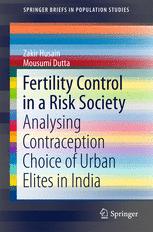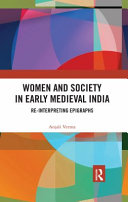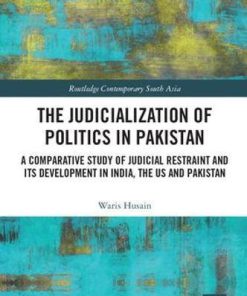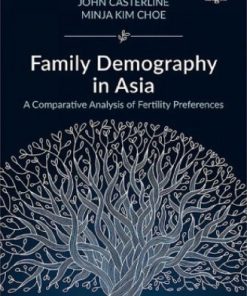Fertility Control in a Risk Society Analysing Contraception Choice of Urban Elites in India 1st Edition by Zakir Husain 8132236856 9788132236856
$50.00 Original price was: $50.00.$25.00Current price is: $25.00.
Fertility Control in a Risk Society Analysing Contraception Choice of Urban Elites in India 1st Edition by Zakir Husain – Ebook PDF Instant Download/DeliveryISBN: 8132236856, 9788132236856
Full download Fertility Control in a Risk Society Analysing Contraception Choice of Urban Elites in India 1st Edition after payment.

Product details:
ISBN-10 : 8132236856
ISBN-13 : 9788132236856
Author: Zakir Husain
This book analyses the reasons for relying on behavioural contraception methods among urban ‘elites’ in India and examines their efficacy in controlling fertility. It also traces variations in contraception choice over the reproductive cycle of women. Although researchers and policy makers generally equate reliance on behavioural contraceptive methods with low levels of education and awareness and lack of desire to control fertility, this perception has been questioned in recent years. The authors’ analysis of the first three rounds of the National Family Health Survey (NFHS) data in India reveals that behavioural contraceptive methods are popular in eastern India. Moreover, it is urban educated women who rely on behavioural methods, and are apparently able to regulate fertility quite effectively with such methods. NFHS data, however, has some limitations and this motivates the authors to explore birth control methods through primary surveys of currently married graduate women in Kolkata. The use of behavioural contraception methods is a little researched area globally and this is the first book focusing on the topic in India.
Fertility Control in a Risk Society Analysing Contraception Choice of Urban Elites in India 1st table of contents:
1 Behavioural Contraception Methods
Abstract
1.1 Birth Control Practices
1.2 Behavioural Contraception—Better Than Only no Method?
1.3 Behavioural Contraception and Regulation of Fertility
1.3.1 Historical Role in Europe
1.3.2 The Case of Italy
1.3.3 Contraception in India
1.3.4 Behavioural Methods in South and South-East Asian Countries
1.3.5 Why the Use of Behavioural Methods Is Under-Reported?
1.4 Why Do People Rely on Behavioural Methods: Alternative Explanations
1.5 Research Questions
1.6 Data Sources
1.7 Scheme of Study
References
2 Methodological Issues
Abstract
2.1 Introduction
2.2 National Family Health Survey Data
2.3 Profile of NFHS Sample
2.4 Planning the Primary Survey
2.4.1 Sampling Strategy
2.4.2 Sample Profile
2.5 Methodology
2.5.1 Steps in Analysis
2.5.2 Qualitative Analysis
References
3 Ultra-modernism or Son Preference?
Abstract
3.1 Theory of Ultra-modern Contraception
3.1.1 Behavioural Methods as a Form of Cultural Dissent
3.1.2 Traditional Contraception as Natural Method—New Forms of Modernity
3.2 A Critical Assessment
3.3 Re-Examining All-India Data
3.4 Contraception Use in West Bengal
3.5 Efficiency of Ultra-Modern Contraception
3.6 Multivariate Analysis
3.6.1 Functional Form
3.6.2 Analysis of Econometric Results
3.6.3 Gender Parity and Contraception Choice
3.7 Limitations of NFHS-Based Analysis
References
4 Current Contraception Use
Abstract
4.1 Background of the Primary Survey
4.2 Awareness and Use
4.2.1 Awareness About Contraceptive Methods
4.2.2 Use of Contraception Methods
4.2.3 Reasons Underlying Choice of Contraceptive Methods
4.3 Use of Behavioural Methods
4.4 Current Contraception Choice and Parity
4.5 Econometric Analysis of Current Use
4.5.1 Models and Their Functional Specifications
4.5.2 Results of Econometric Models
4.5.3 Interpreting the Results
4.6 Son Preference and Behavioural Methods: A Reassessment
4.6.1 Explaining the Econometric Results
4.6.2 The Singular Absence of Son Preference
Appendix: MultiCollinearity Tests Using Condition Indices
References
5 Method or Methods?
Abstract
5.1 Analysing Mix of Contraception Methods
5.2 Pattern of Combination Mix
5.3 Reasons Underlying Contraceptive Choice
5.4 Contraception Mix and Pregnancy
5.4.1 Contraceptive Choice and Nature of Pregnancy
5.4.2 Outcome of Pregnancy and Contraceptive Choice
5.4.3 Re-examining Other Modern Methods
5.4.4 Rhythm Versus Withdrawal
5.5 Transition from One Combination to Another
5.6 An Econometric Analysis
References
6 Contraception in a Risk Society—A New Approach to Studying Reproductive Behaviour
Abstract
6.1 Global Sex
6.2 Conceptualizing Globalization and Sexuality
6.2.1 Role of Norms
6.2.2 Role of Social Forces
6.2.3 Role of Physical Environment
6.3 Globalization and Risk
6.3.1 Risk and “Risk Society”
6.3.2 New Forms of Risk in Modern Society
6.3.3 Stress, Sexuality, and Fertility in a Risk Society
6.3.4 Generation Me and Sexuality
6.4 Some Qualitative Information
6.5 Summing up
References
7 Behavioural Contraception Methods and Urban Graduates: Summing Up the Evidence
Abstract
7.1 Returning to Research Questions
7.1.1 How Popular Are Behavioural Methods?
7.1.2 Behavioural Methods and Fertility Control
7.1.3 Cultural Dissent, or Son Preference?
7.1.4 From Method to Method Mix
7.2 Transition Matrices
7.3 Summing Up and the Road Ahead
People also search for Fertility Control in a Risk Society Analysing Contraception Choice of Urban Elites in India 1st:
fertility analysis definition
fertility and sterility conflict of interest form
fertility and sterility asrm
fertility of a society
fertility and sterility impact factor
Tags: Fertility Control, Risk Society, Analysing Contraception, Urban Elites, Zakir Husain
You may also like…
History - Asian History
Jurisprudence & Law - General & Miscellaneous Law
Politics & Philosophy
Business & Economics
Equity Markets in India Returns Risk and Price Multiples 1st Edition Shveta Singh
Politics & Philosophy
Politics & Philosophy












